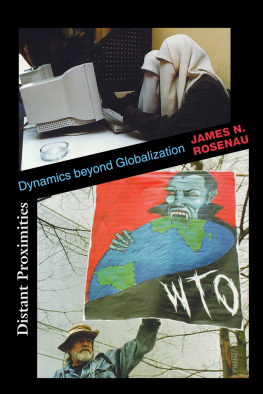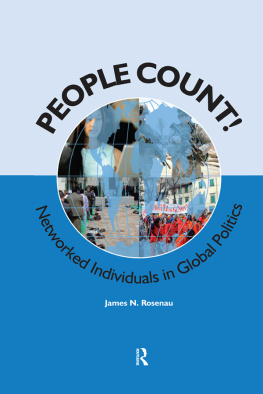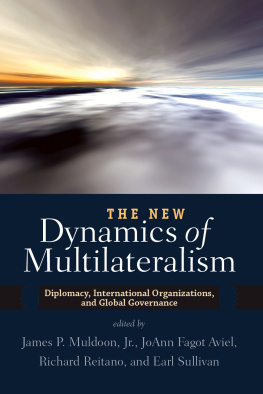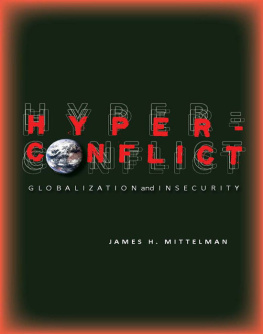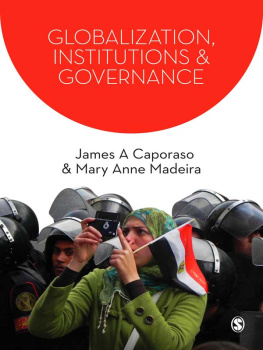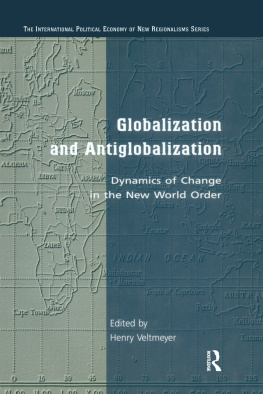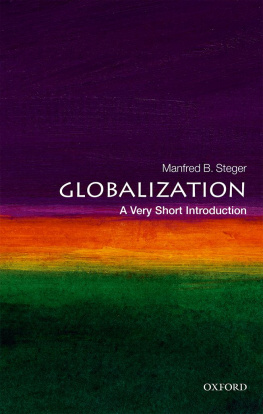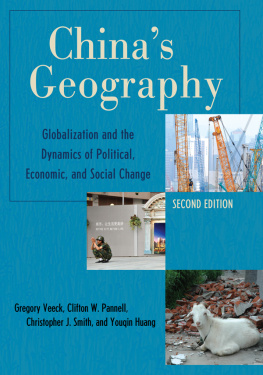Copyright 2003 by Princeton University Press
Published by Princeton University Press, 41 William Street, Princeton,
New Jersey 08540
In the United Kingdom: Princeton University Press, 3 Market Place,
Woodstock, Oxfordshire OX20 1SY
All Rights Reserved
Library of Congress Cataloging-in-Publication Data
Rosenau, James N.
Distant proximities : dynamics beyond globalization / James N. Rosenau.
p. cm.
Includes bibliographical references and index.
ISBN 0-691-09523-X (alk. paper) ISBN 0-691-09524-8 (pbk. : alk. paper)
eISBN 978-0-691-23111-2
1. International relations. I. Title.
JZ1305 .R67 2003
327.1'01dc21 2002031741
British Library Cataloging-in-Publication Data is available
http://press.princeton.edu
R0
Preface
I WAS JUST COMPLETING the fourth revision of this book and getting ready to send it to the publisher when the World Trade Center and the Pentagon were attacked on September 11, 2001. Aside from the numbness induced by these horrendous events, I had to confront the question of what they meant for the books foci and themes. Was a major rewrite in order, given a widely articulated notion that everything had changed as a result of the attacksthat the world had entered a new era in which long-standing premises and practices were no longer viable? As one analyst put it, Few veteran foreign policy watchers can remember when a single event has had so instant and so profound an effect on the entire dynamic of world politics.
Further reflection, however, led me to conclude that, shocking as they were, the terrorist attacks did not contradict the basic presumptions of the book: that everywhere people and their societies have entered an emergent epoch, an epoch marked by pervasive uncertainties, perplexing ambiguities, and unending contradictions fostered by a wide range of dynamics, not the least being newly empowered individuals and expanded roles for nongovernmental agents of change. Thus it made sense to interpret the attacks as adding a new dimension to the analysis rather than as upending its central thrusts. Viewed in this way, the attacks were yet another distant proximityan appalling one that had vast consequences, to be sure, but nevertheless a sequence of events consistent with the underlying patterns set forth in the earlier drafts of the manuscript. Accordingly, what follows (including the remainder of this preface) consists of previously written paragraphs and chapters plus the inclusion, where relevant, of estimates of how the terrorist attacks exemplify and expand the original formulation of a shrinking world in which what is distant is also proximate.
This book has been brewing for a long, long time. For years I have been perplexed and preoccupied by the question of how individuals (alone and in groups) at the micro level and collectivities (states but also any other type of organization) at the macro level shape each others behavior in world affairs. My conception of where the solution of this micro-macro, or macro-micro, problem lies has never wavered: it has always seemed clear that the two types of agents interactively shape each other, that one is not necessarily more causally powerful than the other. Thus to ignore the impact of either level is to ensure truncated and insufficient analysis. This conviction has been strengthened even further in recent years by the extent to which politics and society have become driven less by longstanding ideologies and more by self-centered preoccupations. As I argue in the ensuing pages, what differentiates people today is not so much their commitment to conservative, liberal, or radical perspectives as it is their orientations toward the near and distant worlds in which their lives are ensconced. Hence the book is organized around twelve worlds that are conceived to be the focus of their orientations toward the course of events.
But to be convinced of where the solution lies is not to overcome perplexity or resolve the micro-macro problem. On the contrary, increasingly the problem has loomed as intractable and insoluble because standard methodologies for unraveling it are scarce and those that do exist lie outside my competence. I do not have the resources to conduct extensive experiments or interviews. Nor do I have the training to employ a methodology that has lately shown promise as a way of addressing the problem, that is, the use of computer simulations to probe agent-based models that allow for observation of how variations at one level are linked to variations at the other level.
So what to do? If the problem will not go away, and if one is unwilling to treat one level as causally predominant, how to proceed? How to dare to take on the problem when it seems virtually certain one is bound to fail?
The chapters that follow are an attempt to answer these questions. They derive from a conviction that the only sure way to fail is not to try, hoping that even if success proves elusive, it will point others to possible solutions of the problem. In retrospect, it seems clear this stubborn conviction has always driven my inquiries, especially after I began to appreciate that profound transformations on a global scale included meaningful and systematic variations at the micro level; that neither individuals nor publics are constants; and that they can vary in systematic ways that have macro consequences. For some time I have contended that micro variations involved change in the skills of people, and here this contention is expanded to include several other micro variables (see ). This conceptual breakthrough has facilitated a renewed effort to address the micro-macro problem. Now, at least, a plausible basis for linking shifts in the conduct of collectivities to variations in peoplein their skills, orientations, interests, and actionsis open to exploration.
Consequently, too, the methodological challenge no longer seems so daunting. Committed to accounting for the influence of ordinary persons at the macro level, one can turn to a form of inquiryjournalismin which the actions and attitudes of individuals are treated as reflections of larger processes. It takes only a casual reading of todays newspapers to readily imagine editors advising cub reporters to open their accounts with a human interest vignette, with the result that most news stories begin with the plight of a particular person or family and then move on to how one or another macro institution shapes, sustains, ameliorates, or otherwise responds to such individual situations. Such a mode of analysis is not hardor even softscience, to be sure, but it does offer a means of more consistently focusing on the micro-macro problem than does virtually any other empirical method. It is thus neither an accident nor a form of laziness that the ensuing pages are pervaded with citations to accounts in the New York Times and other news media sources. In effect, reliance on the anecdote becomes a methodology of investigation, allowing for the pursuit of micro-macro linkages that one senses to be crucial to world affairs even though they may not be systematically traceable. Doubtless some readers will deride proceeding in this way, but I make no apology for having done so. It is for me a way to break into an otherwise irresolvable problem. Hopefully the book will provoke further micro-macro inquiries even if it does not vindicate such a seemingly crude methodology.

